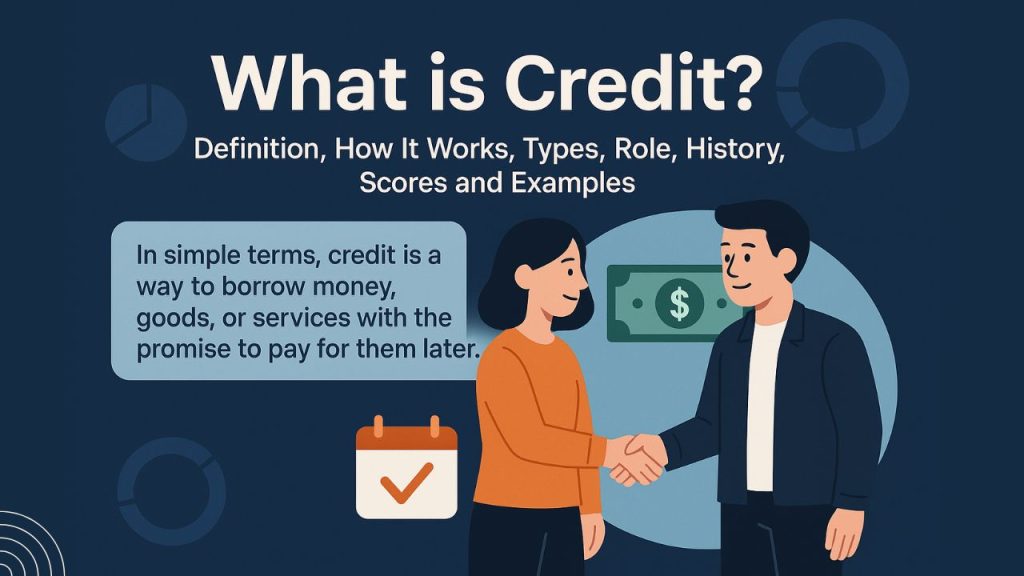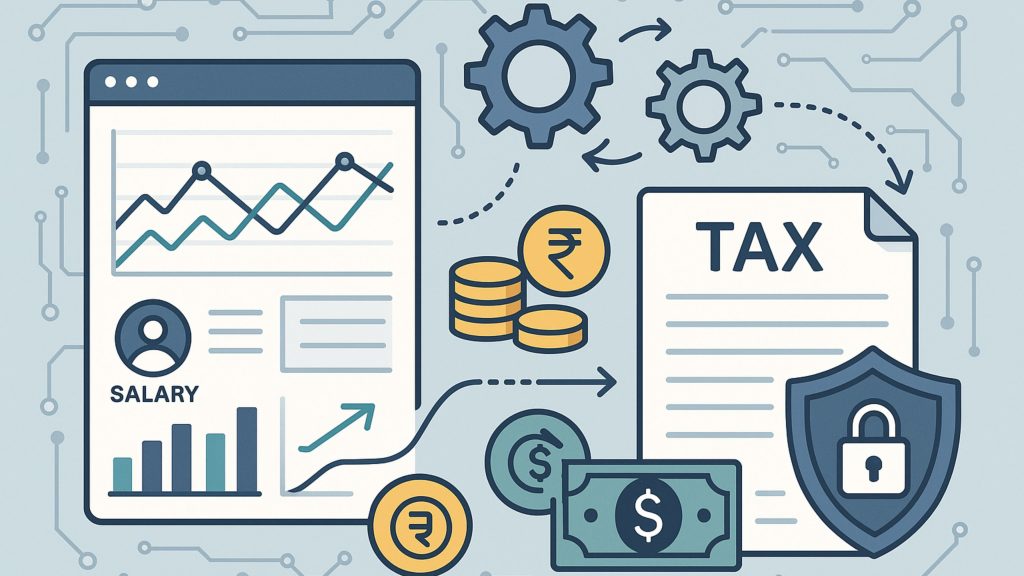Variable Pay: Meaning, Purpose, Example, and Calculation

When it comes to rewarding your hard work, variable pay adds a performance-driven edge to your earnings. Unlike your fixed monthly salary, this part of your compensation depends on how well you meet certain goals—be it hitting sales targets, completing key projects, or contributing to company success. Variable pay can come in the form of bonuses, commissions, or profit-sharing, and is designed to recognize and reward your individual efforts. It’s not just a financial incentive; it’s a way for your employer to acknowledge the impact you make. In this guide, you’ll learn what variable pay means, why it matters, and how it’s calculated.
What is Variable Pay?
Variable pay is the part of your salary that depends on how well you perform—or how well your company does. Unlike your fixed monthly income, this amount isn’t guaranteed. It’s typically linked to specific goals like hitting sales targets, completing projects on time, or helping the company reach profitability. Think of it as a performance-driven reward: the better the results, the more you earn. This approach not only motivates you but also aligns your personal success with the company’s growth, encouraging a results-oriented work culture.
How Variable Pay Works
Variable pay is designed to reward you for your performance and contributions beyond your fixed salary. Unlike your base salary, which stays the same every month, variable pay fluctuates depending on how well you meet certain goals or targets set by your employer. These goals could be based on individual performance, team achievements, or overall company success.
Common types of variable pay include bonuses, commissions, and profit-sharing. For example, sales professionals often earn commissions based on the deals they close, while others might receive bonuses for meeting specific targets like customer satisfaction or project completion. The idea behind variable pay is to motivate you to put in extra effort and achieve your best results. It aligns your personal goals with the company’s objectives, fostering a sense of ownership and responsibility.
However, the key to making variable pay work effectively lies in fairness. It’s crucial that the targets and incentives are clear, achievable, and not so demanding that they create unnecessary stress or unhealthy competition.
Here’s a simple formula that shows how variable pay is calculated:
Variable Pay = Base Achievement × Incentive Rate × Achievement Factor
This formula helps determine your payout based on your performance, with higher achievements leading to higher rewards.
Recommended Reads for You
Example of Variable Pay
To truly understand how variable pay benefits you, let’s walk through a real-world example from a sales environment.
Imagine you work for a company that offers an incentive plan on top of your fixed salary. You earn a base 2.5% commission on all sales. But here’s the exciting part — if your sales cross ₹15 lakhs, your commission on the next slab jumps to 4.5%, and if you go beyond ₹25 lakhs, it increases to 7.5%. This tiered structure rewards you more for higher performance.
Here’s how that looks in action:
Employee | Sales Achieved | Variable Pay Calculation | Variable Pay |
You (Emp 1) | ₹10 lakhs | 2.5% of ₹10 lakhs | ₹25,000 |
Colleague (Emp 2) | ₹20 lakhs | 2.5% of ₹15 lakhs + 4.5% of ₹5 lakhs | ₹60,000 |
Star Performer (Emp 3) | ₹30 lakhs | 2.5% of ₹15 lakhs + 4.5% of ₹10 lakhs + 7.5% of ₹5 lakhs | ₹1,20,000 |
This structure shows how putting in extra effort can significantly increase your take-home pay. Variable pay isn’t just a number—it’s a reflection of your results.
Types of Variable Pay: What You Should Know
When it comes to compensation, fixed pay is just part of the picture. Variable pay is designed to reward you for performance, contribution, and going the extra mile. It’s flexible, performance-linked, and can significantly boost your overall earnings. Let’s look at the key types of variable pay you might encounter in your career.
1. Incentive Plans – Earn More for Meeting Goals
Incentive plans are all about performance. If you meet or exceed specific targets—whether they’re tied to sales numbers, productivity, or company profits—you unlock rewards. These plans are often pre-defined and linked to your role or department goals. Common examples include:
- Profit-sharing (based on company-wide financial performance)
- Sales incentives (for hitting or surpassing sales quotas)
- Stock options or equity plans (giving you a stake in the company)
- Gain-sharing (linked to improvements in operational efficiency)
These programs are designed to align your personal goals with the company’s success. When the business thrives, so do you.
2. Bonus Programs – Rewards for Specific Contributions
Bonuses give you extra compensation when you complete certain tasks or meet conditions beyond your regular duties. These are often short-term and tied to specific events or milestones. You might receive:
- A retention bonus for staying with the company through a critical period
- A referral bonus for helping recruit great talent
- A project completion bonus for delivering exceptional results
Think of bonuses as a “thank you” for going above and beyond.
3. Recognition Programs – Celebrating Your Impact
Not all rewards come from hitting targets. Recognition programs shine a light on consistent effort, values-driven behavior, and exceptional work. These are often manager- or peer-nominated, and might include:
- Spot awards (on-the-spot praise and cash rewards)
- Quarterly or annual awards
- Peer recognition or “employee of the month” honors
These programs focus less on metrics and more on making you feel seen, valued, and appreciated.
Understanding Variable Pay Calculation
Variable pay, often tied to performance, gives you the chance to increase your earnings based on your contributions. Whether you’re in sales, customer service, or management, this incentive model encourages you to exceed goals and reward yourself through results. But how is it actually calculated? Let’s break it down with a relatable example.
Imagine you’re a sales professional like Piyush or Tejas. Your company offers a fixed monthly salary plus a performance-based incentive—say, a 10% commission on sales. This means the more you sell, the more you earn. Below is a simple comparison of how variable pay plays out in real terms:
Employee | Monthly Fixed Pay | Sales Achieved | Commission Rate | Commission Earned | Total Monthly Pay |
Piyush | ₹50,000 | ₹80,000 | 10% | ₹8,000 | ₹58,000 |
Tejas | ₹60,000 | ₹100,000 | 10% | ₹10,000 | ₹70,000 |
In this setup, your variable pay directly scales with your output. The better you perform, the higher your reward. Some companies even offer tiered incentives—for example, an extra 5% bonus on sales beyond ₹5,00,000—to push you toward high-value deals.
To make the most of your variable pay, focus on understanding your targets, align your efforts with business goals, and track your results. And remember: variable pay isn’t just about numbers—it’s a reflection of the value you bring to your team. Ready to raise your game and your income?
Is Variable Pay Taxable?
Yes, variable pay is fully taxable in India. Under the Income Tax Act, 1961, any incentive, bonus, or performance-linked payout received as part of your salary package is treated as “Income from Salary” and taxed accordingly.
Here’s how variable pay is taxed:
- Inclusion in Gross Salary:
Variable pay is added to your basic salary and other components like HRA, special allowances, and perquisites to calculate your total taxable income. - Tax Deducted at Source (TDS):
Employers are required to deduct TDS on variable pay at the time of disbursal, just like they do with fixed salary. The TDS rate depends on your overall annual income and applicable tax slab under the chosen regime (old or new). - Form 16 Disclosure:
At the end of the financial year, your employer will issue Form 16, which details your total earnings, including variable pay, and the TDS deducted. You’ll use this form while filing your Income Tax Return (ITR). - Tax Planning Tip:
Since variable pay can fluctuate, it may push your income into a higher tax slab. Proper tax planning—like availing deductions under Section 80C, 80D, and others (if under the old regime)—can help optimize your liability.
In short, variable pay is not exempt—it is taxed like any other part of your salary. Keep track of it during the financial year to avoid surprises during tax filing.
Advantages and Disadvantages of Variable Pay
Variable pay can be a powerful component of your compensation—but it’s important to understand both sides of the equation. On the one hand, it can boost motivation and reward high performance. On the other, it can introduce uncertainty and pressure. Let’s break down the pros and cons to help you decide if variable pay works for your goals and work style.
Advantages | Disadvantages |
Motivates you to perform better and hit your targets | Can be unpredictable—your income may vary based on company or personal performance |
Aligns your work directly with the company’s goals | May create stress or pressure to consistently perform at a high level |
Rewards actual performance, not just time spent | Can lead to inequality if only top performers benefit |
Helps attract and retain high performers like you | Might encourage short-term thinking over long-term strategy |
Offers extra recognition for specific achievements | Measuring performance accurately can be tricky |
Reduces fixed salary cost for employers, which could benefit growth | May seem unfair if you can’t control all factors affecting your performance |
Can feel more merit-based and performance-driven | Managing and administering variable pay systems can be complex |
In short, variable pay can be a win-win when done right—but it also demands clarity, consistency, and realistic performance metrics. If you’re someone who thrives on challenge and performance-based rewards, variable pay might be the boost you’re looking for.
Fixed Pay vs. Variable Pay: What’s the Difference for You?
When it comes to your salary structure, understanding the difference between fixed and variable pay can help you better manage your finances and career expectations. Each component plays a unique role in how you’re compensated for your work.
Here’s a quick comparison to help you see how they differ:
Aspect | Fixed Pay | Variable Pay |
What It Is | A guaranteed amount you receive regularly—your financial safety net. | A performance-linked component that rewards results—you earn more when you perform better. |
How It’s Calculated | Based on your total annual package divided equally across months. | Tied to performance indicators like sales targets, project outcomes, or company performance. |
Tax Implications | Taxable under the Income Tax Act, with exemptions on specific allowances. | Fully taxable as part of your salary—no exemptions typically apply. |
Common Examples | Basic salary, HRA, transport allowance. | Bonuses, sales commissions, performance incentives, ESOPs. |
By knowing how each pay type works, you’ll be better equipped to plan your budget, optimize your taxes, and understand how your efforts translate into earnings.
Base Pay vs. Variable Pay: What’s the Difference and Why It Matters to You
When you think about your salary, it’s important to understand how it’s structured. Knowing the difference between base pay and variable pay not only helps you read your offer letter better—it also gives you more control over your financial planning.
Simply put, base pay is the stable part of your income that you can count on every month, while variable pay is the performance-linked portion that can boost your earnings when you or your company do well.
Here’s a breakdown to help you see the difference more clearly:
Category | Base Pay | Variable Pay |
Definition | The fixed amount you earn for doing your job. | Extra earnings based on performance or results. |
Purpose | Offers financial security and a steady income. | Encourages and rewards goal achievement, productivity, or company success. |
Stability | Predictable and consistent, regardless of outcomes. | Can vary depending on how you, your team, or your company performs. |
Payment Frequency | Paid on a regular schedule—monthly or bi-weekly. | Typically paid less frequently—like quarterly, annually, or upon milestones. |
Examples | Monthly salary, hourly wage, or agreed fixed income. | Performance bonuses, sales commissions, profit-sharing, stock options. |
Understanding this split helps you ask the right questions during job negotiations and manage your finances better throughout the year. While base pay keeps the lights on, variable pay can reward your efforts and ambition. Ideally, your compensation package should strike a balance between the two.
How HR Can Implement a Variable Pay Plan
If you’re in HR, implementing a variable pay plan is more than just putting a bonus system in place—it’s about motivating people, aligning them with business goals, and rewarding real results. Here’s how you can build a variable pay plan that works for both your organization and your employees.
Start with Clear Objectives
Begin by defining what you want to achieve. Are you trying to boost individual performance, encourage collaboration, or drive revenue growth? When your goals are clear, you can build a plan that supports them. Variable pay works best when it’s linked to outcomes that matter—for the business and for the people doing the work.
Know Your Workforce
Not every role benefits from variable pay in the same way. Analyze which positions have clear, measurable outcomes. Sales, customer success, project teams, and leadership roles are great candidates. Understanding who should be included helps you make the plan fair and impactful.
Design the Right Structure
Choose a structure that fits your goals and culture—bonuses, commissions, profit-sharing, or project-based incentives. Then define the metrics that matter. Whether it’s sales targets, customer feedback, or delivery timelines, your criteria should be specific and achievable.
Next, decide how often payouts happen. Will they be monthly, quarterly, or tied to project completion? The timing should balance motivation with business cash flow.
Launch, Monitor, and Evolve
Roll out the plan with clear communication. Everyone should understand how it works and how they can benefit. After launch, keep an eye on results. Is the plan driving the behavior you want? Be open to refining metrics or adjusting payouts as needed.
A successful variable pay plan is never set-and-forget—it’s a dynamic tool that grows with your team and goals.
Factors to Consider for Variable Pay
When designing a variable pay system, there are several key factors to consider to ensure it motivates employees and aligns with company goals. Here are some crucial elements to keep in mind:
1. Clear Success Measurement
It’s essential to define success clearly for your employees. Be specific about what targets they need to meet—whether it’s sales goals, project completion, or customer satisfaction scores. Ambiguity or vague metrics can lead to confusion and disengagement. Clear, measurable, and achievable targets will ensure that employees understand exactly what is expected of them and how their performance will be rewarded.
2. Competitor Analysis
To stay competitive in attracting and retaining top talent, it’s important to assess what kind of incentive plans your competitors are offering. If your compensation plan is significantly lower than the industry standard, it may be time to adjust. A market-aligned compensation structure not only strengthens your recruitment efforts but also boosts employee satisfaction and retention.
3. Regular Communication of Changes
A variable pay plan should be flexible and adaptable to changing business conditions. As market demands or company objectives evolve, ensure you update employees on any changes to targets or compensation structures. Transparent communication about these updates will help employees stay motivated and focused on achieving new goals.
4. Setting Realistic and Achievable Targets
While it’s important to challenge employees, setting unrealistic targets can lead to frustration and burnout. Ensure that the targets you set are both motivating and attainable. When employees can achieve their goals, they experience a sense of accomplishment, which in turn boosts their morale and productivity. Unrealistic goals can have the opposite effect and lower motivation.
By considering these factors, you’ll be able to create a balanced and effective variable pay structure that drives performance while keeping employees engaged and satisfied.
Challenges in Implementing Variable Pay
Implementing variable pay can be tricky, and it’s important to keep in mind that while it’s meant to drive performance, it can sometimes lead to unintended challenges.
One of the biggest hurdles you might face is setting clear and achievable performance targets. If the targets you set are unrealistic, it could lead to frustration, stress, or even unhealthy competition among employees. Finding the right balance is crucial to keeping everyone motivated and on track.
Another challenge is ensuring transparency and clear communication. If employees don’t fully understand how their variable pay is calculated or what the performance criteria are, it can lead to confusion and dissatisfaction. Without proper clarity, people may feel that the system is unfair, even if it isn’t.
Fairness is also a major concern. Different roles and departments may have varying levels of difficulty when it comes to meeting performance targets, so it’s essential to ensure that your variable pay structure is equitable across the board to avoid resentment or a sense of inequality.
Lastly, the unpredictability of variable pay can make it difficult for employees to plan their finances effectively. This uncertainty can negatively affect morale, as employees may feel anxious about the inconsistency of their pay.
By addressing these challenges head-on, you can create a more effective and motivating variable pay system.
Frequently Asked Questions (FAQs)
Variable pay in Cost to Company (CTC) refers to the portion of an employee’s compensation that is performance-based and may vary depending on their individual performance, the company’s performance, or achievement of specific targets. Unlike fixed pay, which remains constant, variable pay can include bonuses, incentives, commissions, or performance-linked rewards. It serves as an incentive to motivate employees to meet their goals and drive company success. This pay component fluctuates, making it contingent upon various performance metrics.
An example of variable pay could be seen in the following scenario: Suppose your monthly salary is Rs. 30,000, where Rs. 25,000 is fixed pay, and Rs. 5,000 is variable pay. The variable pay amount could depend on individual performance, departmental targets, or overall company achievements during the month. If performance targets are met, you may receive the full Rs. 5,000; if the targets are not met, you may receive a lower amount or nothing at all, making it an incentive-based pay structure.
When we talk about 10% variable in salary, it means that the variable pay component is 10% of your fixed salary. For example, if your fixed salary is Rs. 50,000, then the 10% variable pay will be Rs. 5,000. This variable portion typically depends on performance, and its payout may vary based on whether you achieve specific goals set by the employer. In many cases, a higher percentage of variable pay is linked to seniority or performance, with employees in higher roles often having a larger share of variable pay in their total compensation.
Variable salary can be an excellent way to reward employees for their performance, motivating them to exceed expectations and deliver exceptional results. For companies, it offers a way to manage compensation costs based on the overall performance of the business. From an employee's perspective, it can be financially rewarding when goals are met, providing the opportunity to earn more than the fixed salary. However, it’s important to note that variable salary introduces an element of uncertainty, which can be challenging if performance is inconsistent or beyond your control.
There is no definitive answer to whether fixed pay or variable pay is better as it ultimately depends on individual preferences, career goals, and risk tolerance. Fixed pay offers stability and predictability, making it an ideal option for employees who prefer financial security. On the other hand, variable pay offers the opportunity to earn more based on performance, making it suitable for those who are confident in their abilities and are motivated by incentives. The ideal pay structure balances both fixed and variable components, allowing employees to benefit from security while being incentivized to perform.
No, Provident Fund (PF) is not part of variable pay. PF is a fixed, mandatory contribution towards retirement savings, and it is deducted from an employee's salary. It is usually part of an employee’s fixed compensation. Variable pay, on the other hand, is performance-based and fluctuates depending on how well an employee or the company performs. PF contributions are made consistently regardless of performance and are designed to provide long-term financial security to the employee after retirement.
Whether you receive your variable pay after resignation depends on your company’s policies and the terms of your contract. In many cases, employees may still be eligible for variable pay while serving their notice period, especially if they have met the performance targets. However, if you leave before achieving the set goals, or if the company’s policy requires employees to be with the company for a certain period to receive performance incentives, you may not receive the full variable pay. Always clarify the terms with HR before resigning.
Variable pay is generally not paid on a monthly basis. Since it is performance-based, it is typically distributed on a quarterly, half-yearly, or annual basis. Some companies may tie variable pay to specific targets or milestones achieved within these periods. Unlike fixed salary, which is paid regularly each month, variable pay is contingent on the performance metrics that are reviewed periodically. This allows for a fair assessment of individual or team achievements before determining the payout.
Yes, variable pay is part of the total Cost to Company (CTC). CTC includes all the components of an employee’s compensation, including both fixed and variable elements. While fixed pay remains constant, variable pay can change depending on performance. The variable pay component may include bonuses, incentives, or commissions, and it serves as an incentive to motivate employees. Employers include this in the CTC to give employees a complete picture of the total compensation package.
While variable pay offers several benefits, it does come with some disadvantages. One of the biggest drawbacks is uncertainty. Employees may struggle with financial planning as variable pay is not guaranteed and can fluctuate depending on performance or company results. This can lead to dissatisfaction, especially if targets are difficult to meet or if external factors affect performance. Additionally, the pressure to meet performance targets can lead to stress or burnout, particularly if expectations are unrealistic or poorly communicated. Companies must ensure the variable pay system is fair and achievable to avoid these issues.
Yes, variable pay is taxable just like your regular salary. According to the Income Tax Act, variable pay is considered part of your total income and is subject to tax based on your income tax slab. When you receive your variable pay, the employer will deduct Tax Deducted at Source (TDS), and the amount will be included in your taxable income. When you file your Income Tax Returns (ITR), the total variable pay will be accounted for and could increase your taxable income, potentially leading to a higher tax liability.









